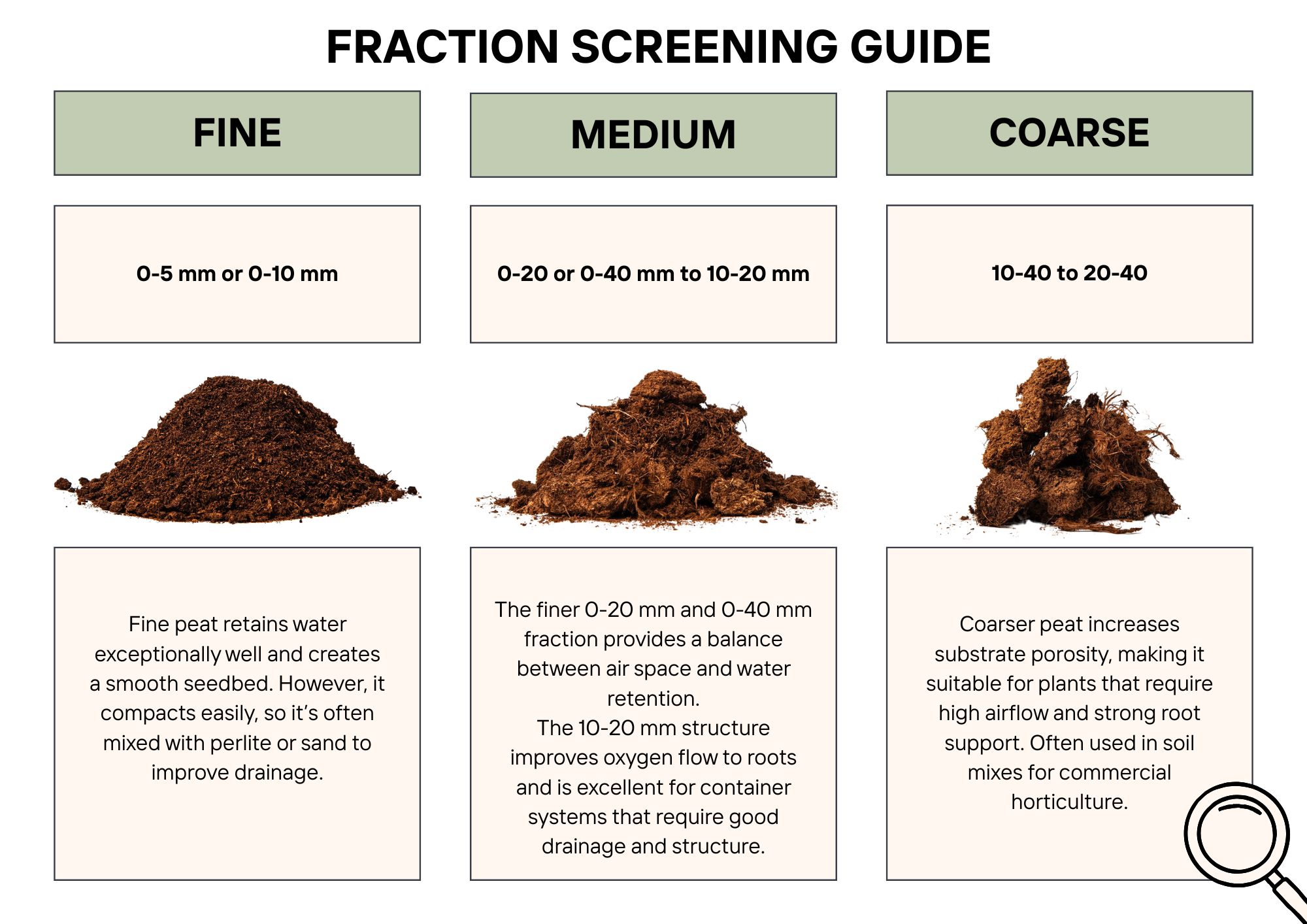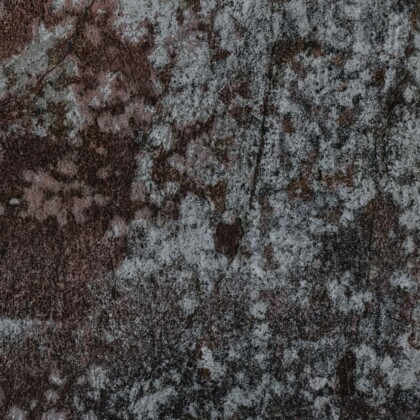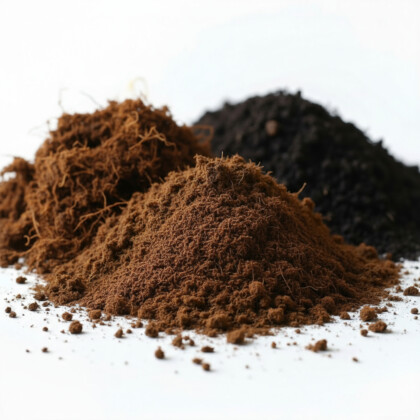

Peat moss isn’t a one-size-fits-all solution. Screened fractions of peat come in various sizes—each suited for different horticultural applications. Understanding these differences can help you choose the right substrate for optimal plant growth.
From germinating seeds to potting shrubs, peat moss fractions—such as 0–5 mm, 0–20 mm, 0-40mm, 10–20 mm, 10-40mm and 20–40 mm—are tailored to different plant needs. Choosing the right fraction improves soil structure, water balance, and plant health.
Read on to learn how peat moss is screened and which particle sizes are best for different gardening situations.
Understanding Peat Moss Fractions and Grades
Peat moss is an organic deposit made up of partially decomposed vegetal organic matter. It forms slowly in peatlands under water-saturated, low-oxygen, and acidic conditions, which inhibit decomposition.
After harvesting, peat moss is screened to sort it into defined particle size ranges. Each fraction affects drainage, aeration, and moisture retention in specific ways.

According to several informative resources, for example this Canadian Peat Moss page , horticultural-grade peat also varies by its decomposition levels and has to be considered deciding media type for your plants.
It is measured using the Von Post scale, ranging from H1 (lightly decomposed, fibrous peat) to H10 (completely decomposed, black peat with a putty-like consistency). Most commonly used peat in horticulture is likely to be in decomposition levels between H1-H5 where H1–H3 are light, fibrous, and excellent for aeration, while H4–H5 are darker, denser, and better for water retention.
Read more in our blog post about Understanding Peat Moss Decomposition Levels: Choosing the Right Peat for Your Plants
Which Peat Fraction Should You Use?
0–5 mm to 0-10 mm
0–5 mm to 0-10 mm
Best for:
- Seed starting and plug trays
- Microgreens and herbs
- Soil amendment in sandy soils
0–20 mm to 0-40 mm (Universal mix)
0–20 mm to 0-40 mm (Universal mix)
This is the most versatile fraction, ideal for a wide range of plants and environments.
Best for:
- Vegetables (lettuce, tomatoes, cucumbers)
- Common houseplants (spider plants, pothos)
- Herbs (basil, mint, thyme)
- Universal potting soil
10–20 mm
10–20 mm
Best for:
- Flowering plants and nursery stock
- Hanging baskets and decorative pots
- Potted perennials and annuals
10-40 mm to 20–40 mm
10-40 mm to 20–40 mm
Best for:
- Woody ornamentals and shrubs
- Soil loosening in compact clay environments
- Greenhouse tomatoes and large containers
How to Choose the Right Fraction
Choosing the correct peat moss fraction depends on several factors:
Plant type
Fast-germinating seeds, such as lettuce or basil, require a fine and moisture-retentive peat fraction like 0–5 mm. In contrast, mature shrubs and larger perennials benefit from coarser fractions like 20–40 mm, which promote better root aeration and prevent waterlogging.
Growing method
If you are growing plants in containers or plug trays, finer fractions are usually preferred for their ability to hold moisture and support young root systems. For open garden beds or raised planters, a medium or coarse fraction can be used to improve soil structure and drainage.
Soil type
Sandy soils, which drain quickly and retain little moisture, benefit from finer peat moss fractions that help increase water-holding capacity. In loamy soils, a balanced 0–20 mm fraction can enhance both structure and fertility. For heavy clay soils, adding a coarser fraction like 20–40 mm helps break up the density, improving aeration and root penetration.
Watering schedule and climate
In hot and dry climates, or if you cannot water plants frequently, finer peat fractions help retain moisture longer and support healthy plant growth. In cooler, humid regions, or when regular irrigation is possible, using a coarser fraction ensures that excess water drains away easily, preventing root rot and other moisture-related problems.
💡 Tip: For general use, the 0–20 mm fraction is an excellent star ting point. It suits most indoor and outdoor plants, providing a reliable mix of moisture retention and aeration.
Key Takeaways
Peat moss fractions from fine to coarse screening, each serve specific roles in gardening and horticulture.
Peat moss with fraction screening 0–20 mm is a universal blend for vegetables, flowers, and houseplants.
Choose your media based on plant type, growing method, soil, and climate.
Also consider peat decomposition level and any needed additives for better results.
The right peat fraction improves moisture control, root development, and long-term plant vitality.


